Particle Engineering for Multi-molecule Drug Particles & Inhalation Products
Rubiit Particle Engineering for the production of Engineered particles and aqueous dispersions The control of crystal particle size of active ingredients is necessary when the final product performance is reliant upon having well defined and, ideally, engineered mesoscopic particles, such as in the pharmaceutical and agrochemical industries. The size of the particle and the crystal form of the active ingredient can influence behaviour in a biological system, such as rate of dissolution. This is of particular importance given that over 40% of new molecules being developed are poorly water soluble Use of multi-frequency transducers simultaneously in the flow-through zone with the low freq in the center and multiple frequency in the outer cylindrical zone followed by multiple frequency spray drying nozzles in spray drying zone helps create complex designed and engineered pharmaceutical particles With rapidly growing popularity and sophistication in the technology available for particle engineering aimed at improved therapeutic performance, there has been a constant need for developing the Combined technologythat can tailor-make particles byUltrasound assisted sono-milling ,sono-crystallization and Ultrasonic assisted spray drying. This used in conjuction with The spherical crystallization – the nonconventionalparticle- size enlargement technique that also involves crystallization and agglomeration usingbridging liquid helps solve the problem in Totality.
Rubiit used Ultrasound technicsinvolves mechanical vibrations whereby the energy is transferred bymolecular motion. One consequence of this is cavitation. The energy releaseassociated with this phenomenon, once dissipated, can lead to permanent changesin the molecular structure of entities in close proximity. Conversely, the higher frequency ultrasound can be used in a variety of Pharma applications. For many new drugs, the need for improved and efficient drug delivery systems has become apparent, especially when administered in a particulate formThe application of acoustic cavitation can have remarkable benefits on the system ofinterest, whether it is the manufacture of micro-particles or nano-suspensions; not onlydoes the cavitation improve mixing and increasing the diffusion of molecules towardsa pre-crystal cluster or nucleus , it facilitates the formation of a crystalline phase.
Particle / Crystal Engineering Technology
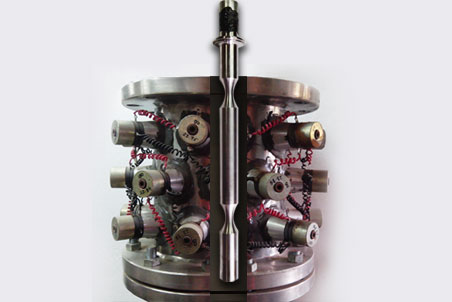
-
The continuous mixing of a solution of API in a suitable miscible solvent with ananti-solvent, whether water or organic solvent, in a flow-cell fitted with several ultrasonic process transducers of multiple frequencies/shapes radiator sizesshows the potential of the sono-precipitation and sono-crytallization of microcrystalline pharmaceutical products . During the course of the process described the solventto ant-isolvent ratio always remain constant and so flow-rates would have to bebalanced. Nevertheless this continuous technique offers some potential.Water-insoluble drug substances can be dissolved in a water-miscible organic solvent which can then be added to water in the presence of an ultrasonic field.
Theultrasound can be applied using an immersed ultrasonic probe, so as to generate adispersion, the form of which will depend upon ultrasonic energy and the presence or absence of stabilisers. Even though acoustic cavitation is present in the initial mixing, amorphous particles are produced; this is seen as essential so as to avoidcrystal growth if crystalline phases are present. The application of continuous ultrasound, following mixing, leads to the formation of crystalline sub-micron particlesvia solution mediated amorphous to crystalline transition.
The Time Has Come
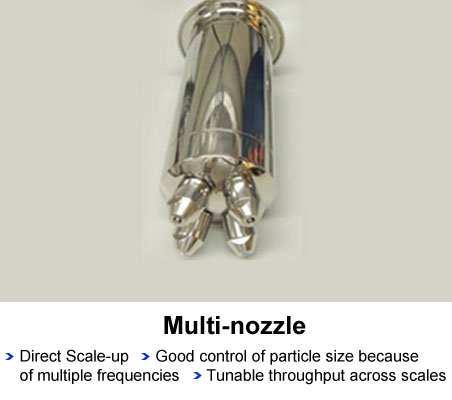
-
The respiratory drug sector is experiencing a surge of interest as companies seek to capitalise on the rapidly growing market. With new product launches and novel formulation combinations development, inhaled drug delivery is reaching far beyond its origins in asthma and COPD treatments.
The search for technological solutions that can produce products deliverable by inhalation – that is, manufacturing particles in the micron range that easily disperse during inhalation – has led the inhalation development world to spray drying. This unique development was inhaled Insulin formulation and has, since then, become a fundamental tool in DPI formulation development. Spray drying offers the flexibility in dry powder formulation to tune the particles to a defined size, with the potential to incorporate multiple actives in a single dry powder formulation, and even develop active ingredient-independent particles.
These can be tailored to maximise aerodynamic performance and, hence, lung delivery, while enabling the necessary process scalability. Several inhalation drug development programmes and marketed products can use Rubiit Technology and thorough understanding of the Spray Drying process, thermodynamics, atomization conditions and fluid dynamics allows the scale-up of Spray Drying processes so that the particle properties are maintained
Sieving & Cleaning of Reactors,Vats, Ampoules, Vials, Glass Ware & Deblocking Pipes
Sieving
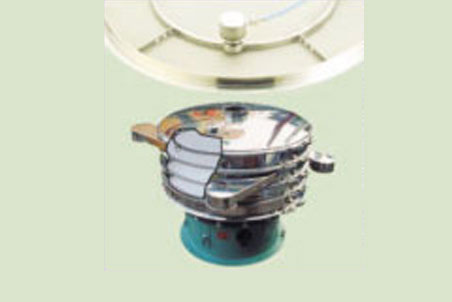
-
The chemical, pharmaceutical, food/luxury food, plastics, metallurgical and minerals industries require extremely high screening standard with minimum wastage to treat and process material and to get it to a size suitable for further processing or direct utilisation. Conventional screening techniques are essentially based on a vibrating/tumbling motion of the screen responsible for the throughput and the separation of large grains. The right technology - Ralsonics Ultrasonics Sieving - is decisive in determining the throughput with finest mesh sizes and materials difficult to screen.
Screen-O-Ral ultrasonic-assisted screening technology superimposes an additional evenly oscillating motion in the urn range on the metal fabric of the screen. This reduces the friction between the wire of the screen and the bulk material and can result in a considerably improved throughput, depending on the bulk material. At the same time the ultrasound diminishes the risk of blockages since the screen wires are permanently undergoing a cleansing action. Hence continuous, economic production is guaranteed. The relevant maintenance costs are reduced to a minimum. All commercially available sieving machines can be retrofit with this technology.
Ultrasonic Tubular Transducer - A tremendous advantage
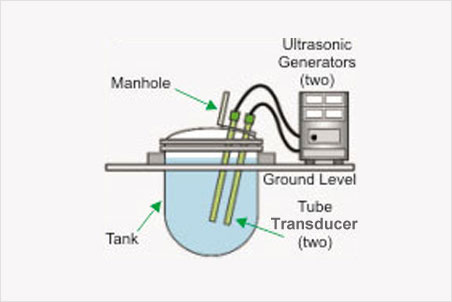
-
Ultrasonic cleaning "Using the tube resonator as a drop-in," presents ability to clean inside of hollow reactor equipment and gas cylinders that was not accessible. The use of Ultrasonic technology in larger-scale operations wasn't considered possible because most ultrasonic transducers produce a uni-directional energy wave, propagating in a single direction. Ralsonics tube resonator solves this problem by producing an omni-directional ultrasonic vibration from the entire tube-shaped surface, producing radial ultrasonic vibrations from the resonating surface. The diameter and length of the tube resonator can be varied from 12 to 90 mm diameter and 300 to2000mm in length.
14640 nos. Tube holes (13.6mm ID) for Steam Generator tube-sheet cleaned by 10 mm dia. Custom designed tube resonator for L&T (NPCIL). Cleaned internaly 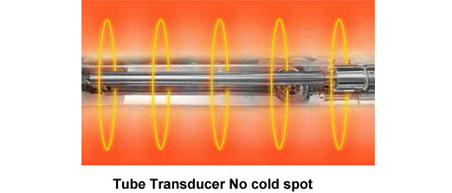
Pipe cleaning Removing build-ups even at High temperatures, High radioactivity, for Any size, length, shape.
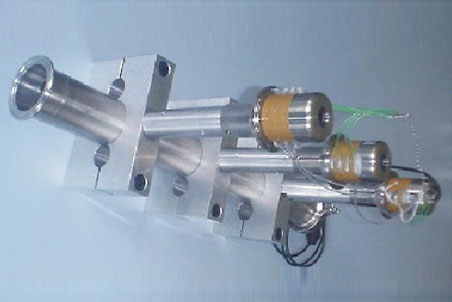
-
Ralsonics technology offers a highly efficient transfer of ultrasonic energy to the metal pipe or tube for processing any liquid material or food that requires ultrasonic treatment. Single or multiple transducers are connected to any size tube or pipe constructed of aluminum, CS. stainless steel, or titanium. The pipe / tube / Valve body fitted with custom clamps externally delivers continuous or intermittent inline ultrasonic treatment, becomes a radiating element and turns any suitable pipe or tube into a highly efficient ultrasonic reactor powered by Ralsonics micro-processor controlled ultrasonic generators. Ralsonics technology will drive pipe or tube of diameter 25 to 250 mm. thickness 2 to 30mm at high power. Flow through design allows easy adaptation to lab and industrial systems.
Applications processing
Filtering, Sterilization, Extractions, Reaction Acceleration. Cavitation accelerates chemical and physical reactions.
• Fine Particle Dispersion - e.g. nanoparticles processing
• Hornogenization -making uniform mixtures of liquids or liquid suspensions.
• Ernulsification - processing foods, pharmaceuticals, and cosmetics.
• Dissolution -dissolving solids in solvents.
• Degassing -removing gases from solutions without heat or vacuum.
• Quenching optimization: uniform and immediate vapor and bubbles layer removal.
Glassware Cleaner
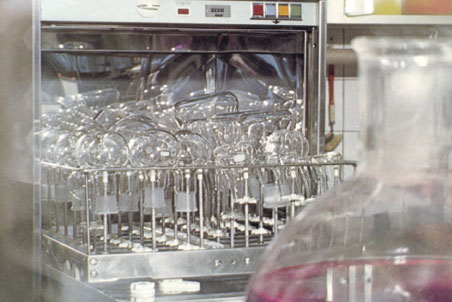
-
The Bulk washing is done on one or two levels by two to three rotating jet arms, spraying from top, bottom & side to guarantee an intensive intemal and external washing. Narrow necked or heavily soiled glassware is individually placed on hollow jet racks; the intensive rinsing guarantees thorough washing of the inside surface. According to the size of the glassware the racks can be fitted with jets of Different length and Diameter. The outside washing takes place simultaneously by the action of the upper and lower rotating jet arms. Based on this technique, all residues can efficiently be loosened and cleaned to produce the most effective washing results. Ultrasonics is employed by pneumatically lowering the basket in the tank.
Bottle Cleaning: Cleaning of liquid bottles is carried out in the same eqpt. Using ultrasonics to remove glass particles sticking near the neck.
Vial & Ampoule: Fully Automated batch type Vial/ Ampoule cleaning eqpt. based on multi-stage Aqueous M equipment with Vacuum facility for glass particle removal. Eqpt. Similar to Vacural cleans upto 3456 Vial/Ampoules in 16min cycle. i.e. 216/min